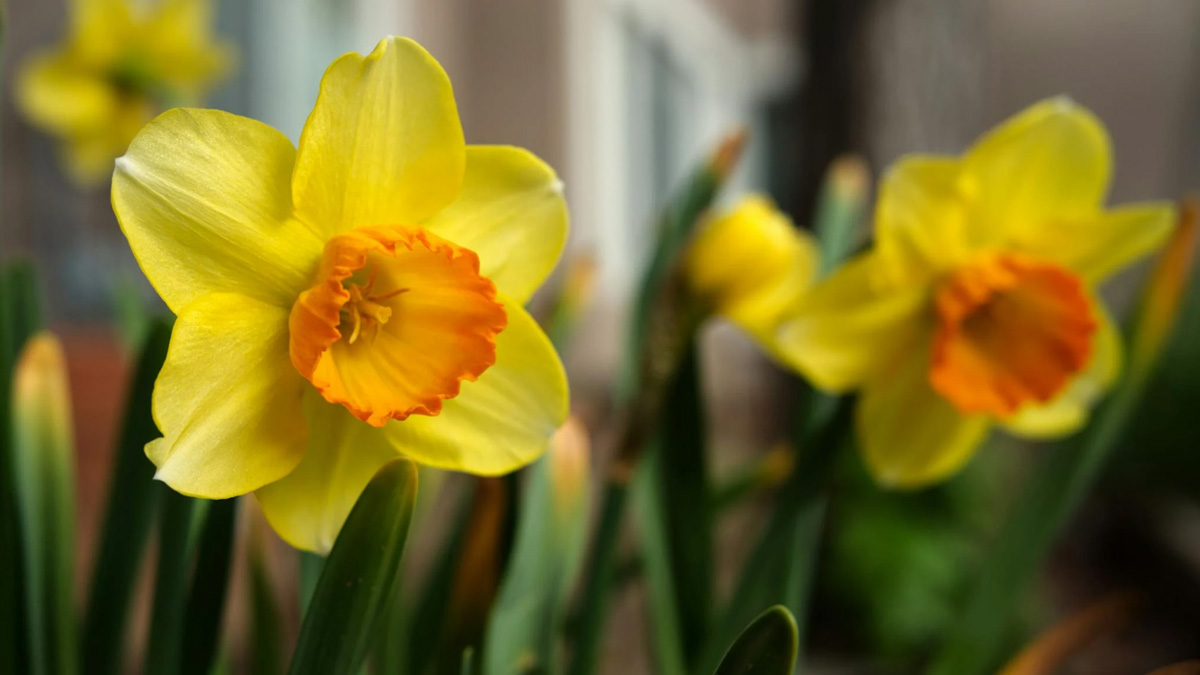How to Grow Beautiful Spring Bulbs in Containers

Spring bulbs are a simple and rewarding way to bring early color to your garden, even if you’re short on space. With the right containers and planting techniques, you can grow tulips, daffodils, hyacinths, and more on a balcony, patio, or porch. This guide will help you select, plant, and care for bulbs to enjoy beautiful spring blooms in any small space.
Why grow spring bulbs in containers?
Growing spring bulbs in containers offers a flexible and space-saving way to enjoy colorful blooms. Containers allow you to move your display where it looks best or receives the most light. They’re also perfect for balconies, patios, and gardens with limited planting space.
Container gardening gives you more control over soil quality and drainage, which are both important for healthy bulbs. You can also protect your pots from harsh winter weather or rodents by repositioning them when needed. This approach is especially helpful in areas with unpredictable spring conditions.
Choosing the right spring bulbs for containers
Some bulbs perform better in pots than others due to their size, growing habits, or bloom timing. Tulips are a classic container favorite, offering tall stems and vibrant blooms in a range of colors. Daffodils are dependable, pest-resistant, and add cheerful yellow to early spring arrangements.
Hyacinths bring rich fragrance and bold color, while crocuses are compact and perfect for shallow pots or layered arrangements. Muscari, or grape hyacinth, adds a soft accent with clusters of blue or purple blooms. For a continuous display, choose a mix of early, mid-, and late-season varieties.
When selecting bulbs, look for firm, unblemished options. Larger bulbs often produce stronger blooms. Avoid any that feel soft or show signs of mold or rot.
Selecting the best containers
The right container can make or break your success with bulbs. Choose pots that are at least 8 to 12 inches deep to accommodate root growth and provide insulation during colder months. Shallower pots work well for smaller bulbs like crocus or muscari.
Drainage holes are a must to prevent soggy soil and rotting bulbs. If your container doesn’t have holes, drill some or use it as a decorative cachepot with a smaller pot inside. Materials like terracotta offer breathability but dry quickly, while plastic retains moisture and is lighter to move.
Match the container size to the number and type of bulbs you’re planting. Crowded bulbs may still bloom, but they’ll be less vigorous. Keep taller bulbs in deeper pots for better support and visual balance.
Preparing the perfect soil mix
Bulbs dislike sitting in wet soil, so drainage is key. A quality potting mix formulated for containers should be your starting point. Mix in perlite, sand, or fine gravel to ensure water moves through easily.
Avoid using garden soil, which is too heavy and may compact in containers. Compost can be added for gentle nutrition and improved texture. If desired, mix in a slow-release bulb fertilizer before planting to support healthy growth in spring.
Step-by-step guide to planting spring bulbs in containers
Spring-blooming bulbs are typically planted in fall before the first frost. Fill your container about two-thirds full with the prepared soil mix. Place bulbs pointy side up and follow spacing guidelines on the packaging, usually around two to three bulb widths apart.
Cover the bulbs with soil to the correct depth, usually two to three times the bulb’s height. If layering multiple bulb types in the same pot, start with larger, late-blooming bulbs at the bottom and work your way up. This lasagna planting method maximizes space and bloom time.
After planting, water thoroughly and label your pot with the bulb names and planting date. In colder climates, store containers in a sheltered area like a garage or cold frame until shoots begin to emerge.
Caring for your container bulbs as they grow
Once bulbs start sprouting, move containers into a sunny spot. Most spring bulbs prefer full sun, though partial sun can still yield blooms. Rotate pots regularly if light is uneven to promote even growth.
Water sparingly during the winter, just enough to keep soil slightly moist. As growth accelerates in spring, increase watering to keep the soil evenly damp but not soggy. Avoid letting water collect at the base of the container.
Feed with a balanced liquid fertilizer every couple of weeks during the growing period. This helps strengthen blooms and replenish nutrients used during flowering.
Creative ideas for displaying spring bulb containers
Group pots in sets of three or five to create visual impact. Mixing heights and container styles can add texture and charm to porches, patios, or stairways. Use tall planters for tulips and daffodils and smaller pots for muscari or crocuses.
Pair bulbs with early-blooming annuals like pansies or violas for added color and softness. Layering bulbs with evergreen ground covers or trailing plants can also make containers look fuller. Move pots as needed to follow the sun or showcase peak blooms.
If your container garden is indoors, choose locations with bright, indirect light. Place trays or saucers under pots to protect surfaces while still allowing for drainage.
What to do after blooming
When blooms fade, snip off spent flowers to prevent the plant from using energy to form seeds. Let the foliage remain until it yellows and withers, as this helps the bulb store energy for the next season. Cutting back leaves too early can weaken future growth.
Once the leaves die back, stop watering and allow the soil to dry out. You can either leave the bulbs in their containers or lift and store them in a cool, dry place. If reusing the container, remove old soil and start fresh the following season.
For bulbs that were layered or crowded, divide them before replanting or storing. This keeps plants healthy and ensures better bloom quality in future seasons.
Common mistakes to avoid
Overwatering is a frequent issue that leads to rotted bulbs and failed blooms. Always use containers with drainage and avoid letting pots sit in standing water. Use a moisture meter or your finger to check soil before watering.
Planting bulbs too shallow can expose them to cold or cause weak stems. Follow depth guidelines closely, especially when layering. On the flip side, planting too deep can delay blooming.
Another common mistake is removing foliage too soon after blooming. Allowing leaves to yellow and die back naturally is essential for recharging the bulbs. Finally, be cautious of overcrowding pots, which can limit airflow and reduce flower quality.
Conclusion
Container gardening with spring bulbs is a practical and creative way to enjoy vibrant flowers in small or flexible spaces. By choosing the right bulbs, preparing well-draining soil, and providing basic seasonal care, you can create a long-lasting and colorful spring display.
